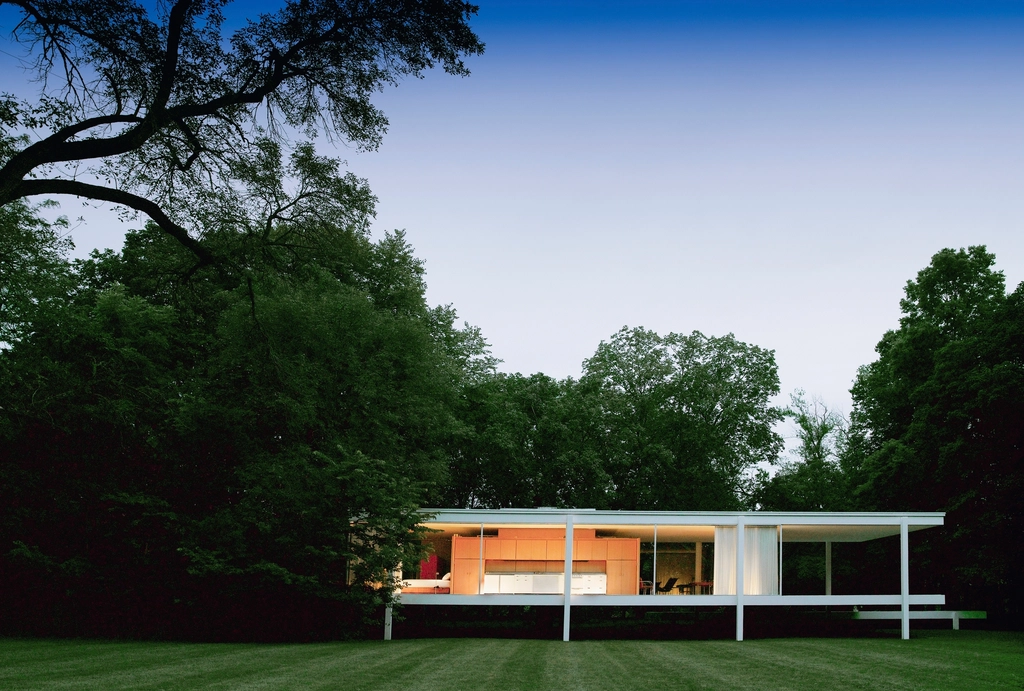The Eames House (Case Study House No. 8) – California, USA
Built in 1949 by the creative duo Charles and Ray Eames, the Eames House stands as a testament to the innovative spirit of mid-century modern architecture. Nestled in the Pacific Palisades of California, this house is a harmonious blend of prefabricated materials, showcasing a modular design that feels both groundbreaking and timeless. It boasts colorful geometric panels that bring life and vibrancy to its structure, making it more than just a living space but an artistic statement. The Eames House is often heralded for its ability to balance functionality with aesthetic appeal, capturing the zeitgeist of its era. Visitors today are still captivated by its playful yet structured design, a reflection of the dynamic partnership between Charles and Ray. Their vision was not just to build a house, but to create a home that resonates with creativity and innovation.
The Farnsworth House – Illinois, USA
The Farnsworth House, designed by Ludwig Mies van der Rohe in 1951, is a masterpiece of minimalist architecture. Situated in Illinois, this glass house seems to float above its natural surroundings, embodying the architect’s famous “less is more” philosophy. Its simplicity is deceptive, as each element has been meticulously planned to create a sense of openness and light. The structure is supported by eight steel columns, allowing the house to hover above the ground, seamlessly integrating with the landscape. This design choice not only enhances the home’s aesthetic but also protects it from the region’s frequent flooding. Inside, the Farnsworth House offers an uninterrupted flow of space, emphasizing the connection between indoor and outdoor living. It remains a powerful example of how minimalism can evoke profound beauty and serenity.
The Stahl House (Case Study House No. 22) – California, USA
Perched high above Los Angeles, the Stahl House is a marvel of architectural daring and ingenuity. Designed by Pierre Koenig in 1959, this house is famous for its dramatic cantilevered design that offers breathtaking views of the city below. The extensive use of glass walls allows for an unparalleled visual connection with the surrounding environment, blurring the lines between interior and exterior spaces. This design approach creates an illusion of living among the sky, with the vast cityscape stretching out like a living painting. The Stahl House has become an icon of Los Angeles architecture, frequently featured in films and photography, capturing the imagination of those who see it. Its bold design continues to inspire architects and designers, embodying the adventurous spirit of mid-century modernism.
The Glass House – Connecticut, USA
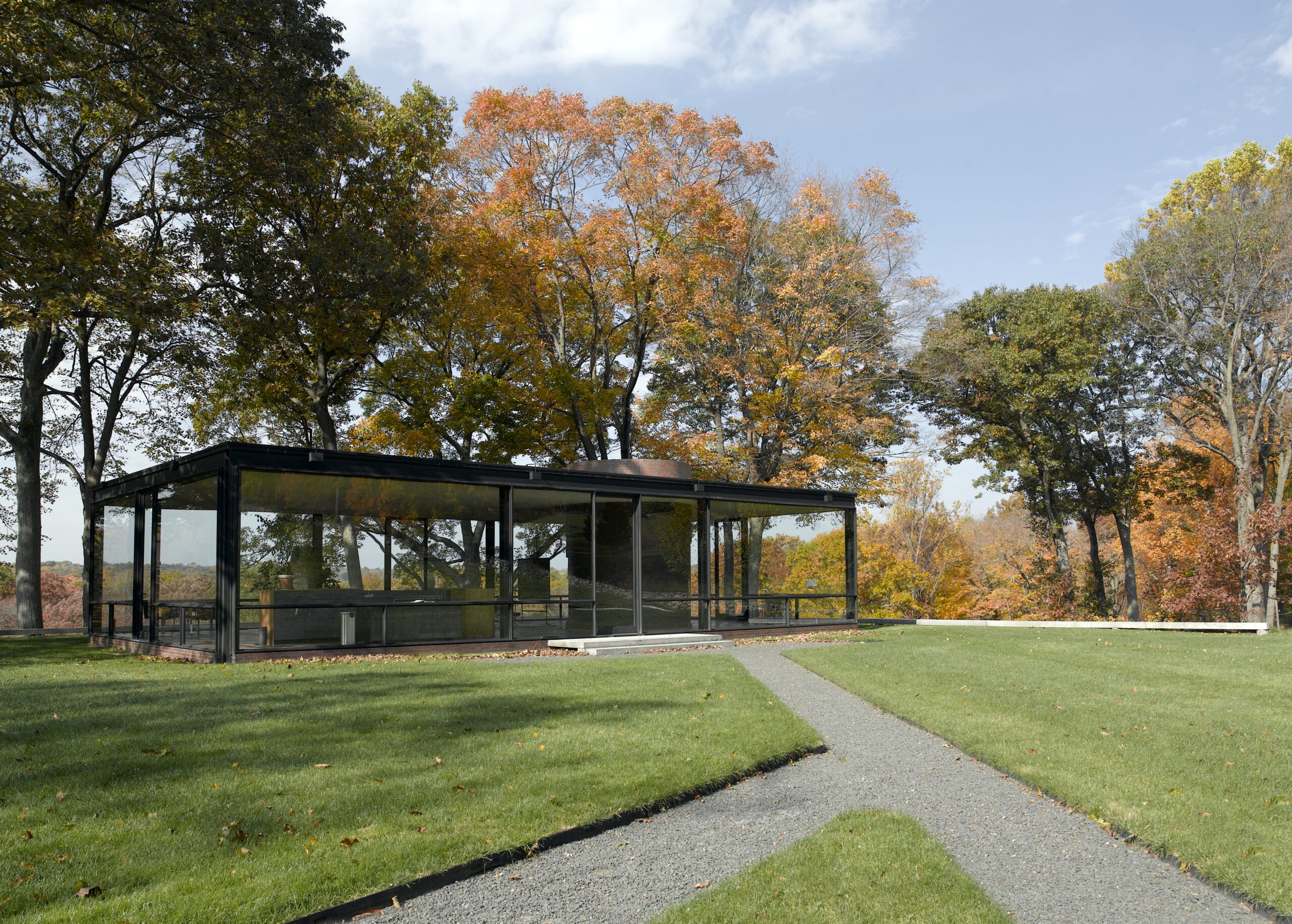
Designed by Philip Johnson in 1949, The Glass House in Connecticut is a paradigm of transparency and simplicity in architecture. Its open-concept design challenges conventional notions of privacy, inviting nature into every corner of the home. The structure is composed almost entirely of glass, creating a 360-degree view of the lush surrounding landscape. This radical approach to design redefined spatial boundaries, offering a living experience that is both serene and exhilarating. Inside, the minimal furnishings complement the house’s clean lines, allowing the focus to remain on the interplay between light and space. The Glass House is not just an architectural achievement but a philosophical statement, exploring the relationship between shelter and the natural world. It remains a source of inspiration for those who seek to push the boundaries of traditional home design.
The Miller House – Indiana, USA

The Miller House, crafted by the visionary architect Eero Saarinen in 1957, stands as a beacon of mid-century elegance in Indiana. Its design is characterized by clean lines and an open floor plan, creating a sense of spaciousness and fluidity. Vibrant pops of color punctuate the home’s interior, adding warmth and personality to its modern aesthetic. The house is a perfect example of how thoughtful design can enhance everyday living, seamlessly integrating form and function. The use of large windows floods the space with natural light, creating a harmonious connection with the outdoors. The Miller House is celebrated for its innovative approach to residential design, combining modern aesthetics with livable comfort. It continues to inspire those who appreciate the beauty of simplicity and the power of color.
The Lovell Health House – California, USA
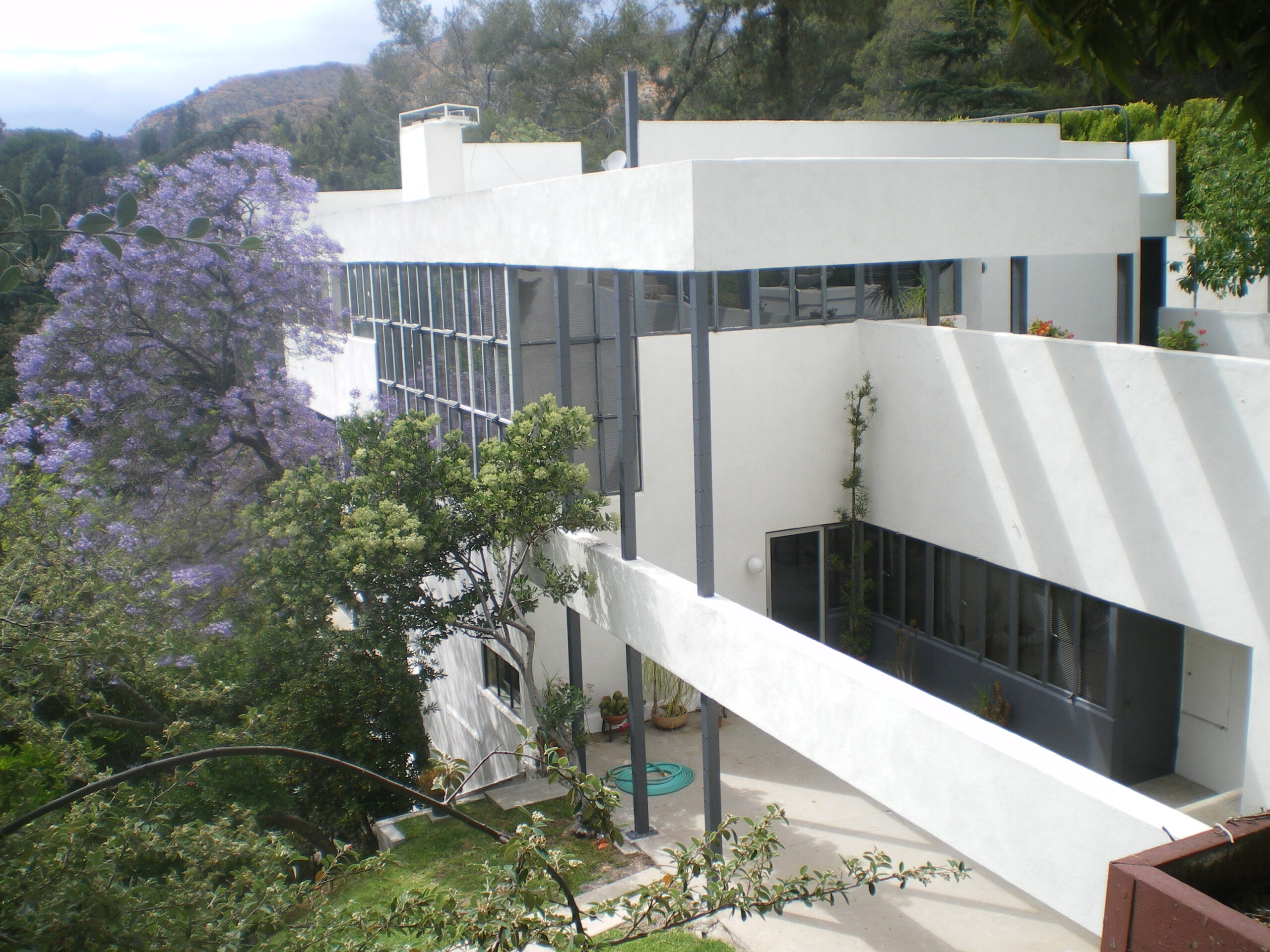
Richard Neutra’s Lovell Health House, completed in 1929, is a pioneering example of modern architecture in America. Located in California, this house was one of the first to utilize a steel frame, setting a precedent for future architectural innovations. Its design emphasizes the integration of nature and modernity, with large windows and open spaces that invite the outside in. The Lovell Health House was conceived as a health-conscious dwelling, promoting well-being through its thoughtful design. Its sleek lines and functional layout reflect Neutra’s commitment to creating environments that enhance the human experience. This house remains a significant milestone in architectural history, influencing countless designers and architects. Its enduring appeal lies in its ability to marry technological advancement with a deep respect for the natural world.
The Gropius House – Massachusetts, USA
Walter Gropius, the founder of the Bauhaus movement, brought his revolutionary ideas to life with the Gropius House, completed in 1938. Located in Massachusetts, this house blends European modernism with New England tradition, creating a unique architectural language. Its design features a combination of industrial materials and traditional elements, resulting in a harmonious fusion of old and new. The Gropius House is characterized by its functional layout and minimalist aesthetic, reflecting Gropius’s belief in the power of design to improve everyday life. Large windows and open spaces create a sense of continuity between the interior and the surrounding landscape. This house is a testament to Gropius’s vision of a holistic approach to design, where form follows function. It continues to inspire those who seek to balance innovation with tradition.
The Schindler House – California, USA
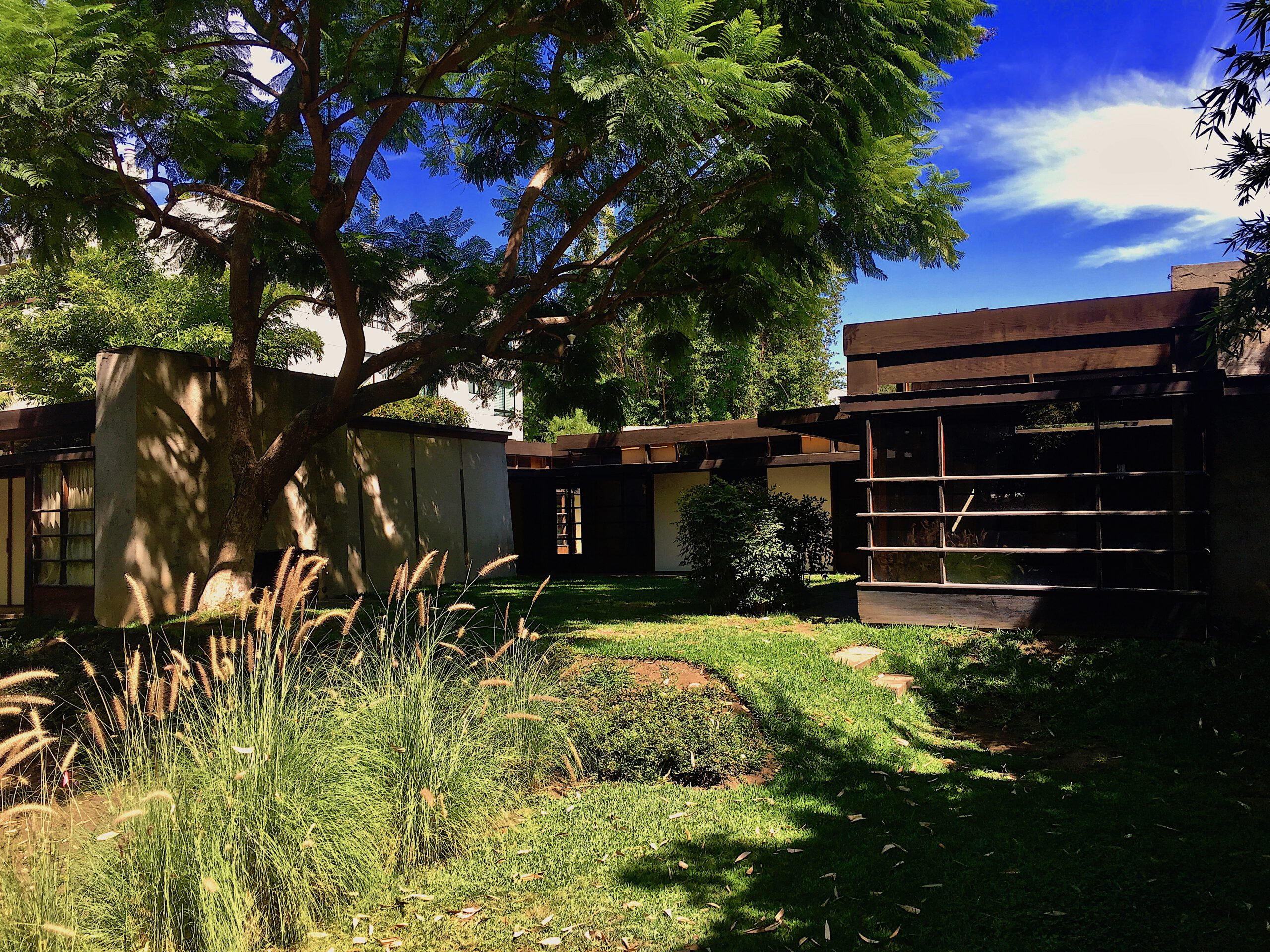
Rudolf Schindler’s Schindler House, completed in 1922, is a radical departure from conventional residential architecture. Located in California, this house features open interiors and flat roofs, emphasizing the concept of indoor-outdoor living. Its design challenges traditional notions of privacy and space, offering a flexible layout that adapts to the needs of its inhabitants. The use of raw materials and simple forms reflects Schindler’s commitment to honest, unpretentious design. The Schindler House is a pioneering example of modernist architecture, influencing the development of the International Style. Its innovative approach to space and structure continues to resonate with architects and designers today. This house remains a symbol of creativity and experimentation, inspiring those who dare to think outside the box.
The Elrod House – California, USA
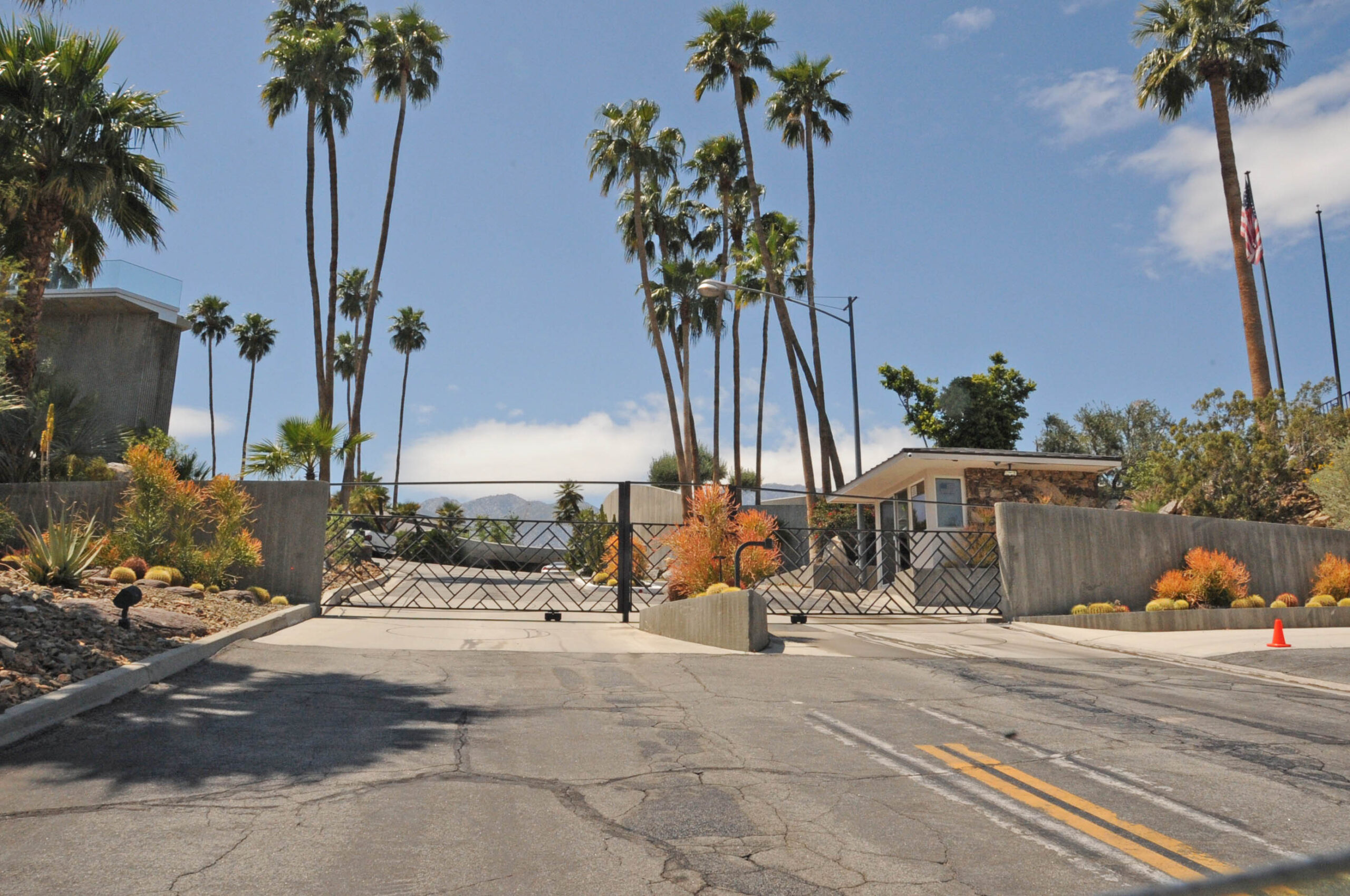
The Elrod House, designed by John Lautner in 1968, is a futuristic desert dwelling that captures the imagination. Situated in California, this house is famous for its appearance in a James Bond film, showcasing its dramatic and otherworldly design. The structure is characterized by its curvilinear forms and expansive glass walls, creating a seamless connection with the rugged desert landscape. Inside, the house features a striking circular living room with a domed ceiling, offering a sense of grandeur and openness. The Elrod House is a masterpiece of organic architecture, blending natural materials with innovative design. It remains a source of inspiration for those who appreciate the bold and unconventional. This house is a testament to Lautner’s ability to create spaces that are both functional and fantastical.
The Smith House – Connecticut, USA
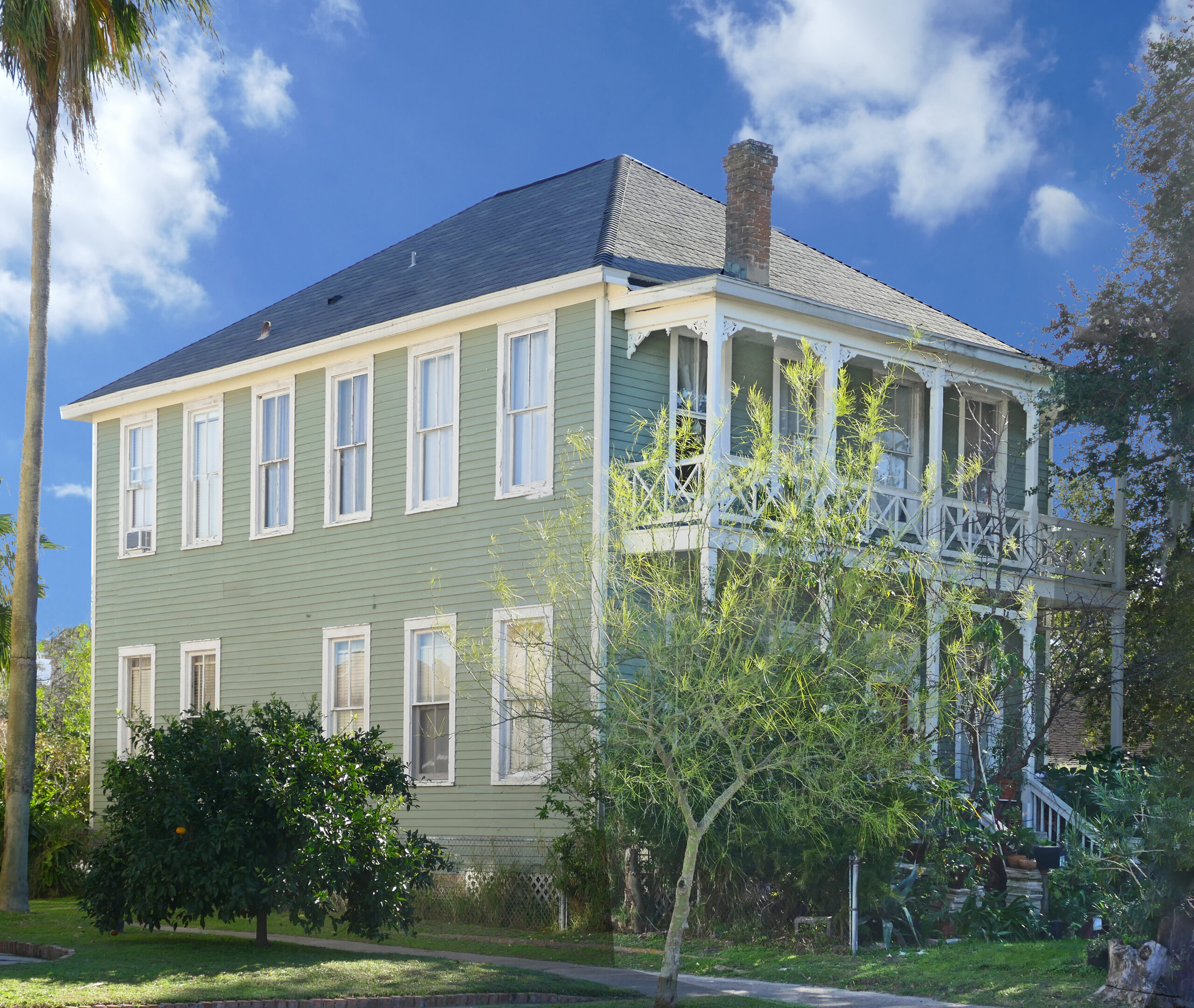
Richard Meier’s Smith House, completed in 1967, is a striking example of modern architecture in Connecticut. Its design is characterized by a white geometric structure with floor-to-ceiling glass walls, creating a sense of lightness and transparency. The house is situated on a bluff overlooking Long Island Sound, offering breathtaking views of the water. Inside, the open floor plan and minimal furnishings create a sense of spaciousness and tranquility. The Smith House is celebrated for its purity of form and clarity of design, reflecting Meier’s commitment to modernist principles. Its timeless aesthetic continues to inspire architects and designers, offering a vision of elegance and simplicity. This house is a testament to the enduring appeal of modern architecture, capturing the imagination of those who appreciate beauty in simplicity.
The Kaufmann House – California, USA
The Kaufmann House, designed by Richard Neutra in 1946, is a masterpiece of desert modernism in Palm Springs, California. Its design is characterized by clean lines and expansive glass walls, creating a seamless connection with the surrounding desert landscape. The house is oriented to take advantage of the natural light and views, offering a harmonious blend of indoor and outdoor living. The Kaufmann House is celebrated for its innovative use of materials and its integration with the environment. It remains a symbol of modernist architecture, influencing the development of the International Style. This house is a testament to Neutra’s ability to create spaces that are both functional and beautiful. Its timeless design continues to inspire those who appreciate the elegance of simplicity and the beauty of nature.
The Bailey House (Case Study House No. 21) – California, USA
Pierre Koenig’s Bailey House, completed in 1958, is a model of efficiency and minimalism in California. Its design is characterized by a steel-and-glass structure, creating a sense of lightness and transparency. The house is oriented to take advantage of the natural light and views, offering a harmonious blend of indoor and outdoor living. The Bailey House is celebrated for its innovative use of materials and its integration with the environment. It remains a symbol of modernist architecture, influencing the development of the International Style. This house is a testament to Koenig’s ability to create spaces that are both functional and beautiful. Its timeless design continues to inspire those who appreciate the elegance of simplicity and the beauty of nature.
The Boomerang House – Australia
Harry Seidler’s Boomerang House, completed in 1955, is a curvilinear structure that merges mid-century style with the Australian landscape. Its design is characterized by sweeping lines and open spaces, creating a sense of movement and fluidity. The house is oriented to take advantage of the natural light and views, offering a harmonious blend of indoor and outdoor living. The Boomerang House is celebrated for its innovative use of materials and its integration with the environment. It remains a symbol of modernist architecture, influencing the development of the International Style. This house is a testament to Seidler’s ability to create spaces that are both functional and beautiful. Its timeless design continues to inspire those who appreciate the elegance of simplicity and the beauty of nature.
The Frey House II – California, USA
Albert Frey’s Frey House II, completed in 1964, is a rock-integrated design that seamlessly blends with its desert surroundings in California. Its design is characterized by a minimalist approach, creating a sense of harmony with the natural environment. The house is oriented to take advantage of the natural light and views, offering a harmonious blend of indoor and outdoor living. The Frey House II is celebrated for its innovative use of materials and its integration with the environment. It remains a symbol of modernist architecture, influencing the development of the International Style. This house is a testament to Frey’s ability to create spaces that are both functional and beautiful. Its timeless design continues to inspire those who appreciate the elegance of simplicity and the beauty of nature.
The Case Study House No. 16 – California, USA
Craig Ellwood’s Case Study House No. 16, completed in 1953, is a showcase of steel-frame construction and modular design in California. Its design is characterized by clean lines and open spaces, creating a sense of lightness and transparency. The house is oriented to take advantage of the natural light and views, offering a harmonious blend of indoor and outdoor living. The Case Study House No. 16 is celebrated for its innovative use of materials and its integration with the environment. It remains a symbol of modernist architecture, influencing the development of the International Style. This house is a testament to Ellwood’s ability to create spaces that are both functional and beautiful. Its timeless design continues to inspire those who appreciate the elegance of simplicity and the beauty of nature.

Kelly Westler is a celebrated designer and author specializing in bold, eclectic interiors. Her book The Art of Spaces showcases her signature mix of colors, textures, and vintage influences, inspiring homeowners to embrace fearless design.

